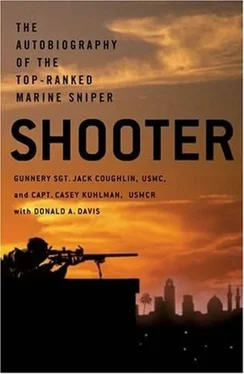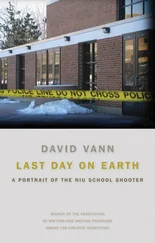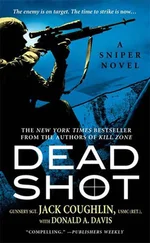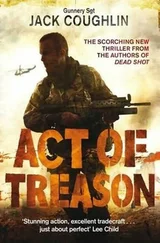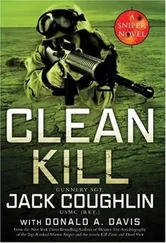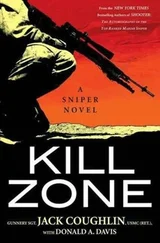A good sniper is trained to think for himself, and I had spent a lot of time in the wild places and had spent countless hours considering the puzzle facing shooters like myself if we were to have a future in this game. I knew the way out was to prove the usefulness of the Mobile Sniper Strike Team concept, but how could I challenge the beliefs of senior officers and military thinkers from around the world? Just talking about the problem did no good. I was, after all, just a staff sergeant, and they were officers, and military protocol, yeah, yeah.
The difference, of course, was that they didn’t have my experience, they were not Marine sergeants, and, most important, they were not snipers! Just because they had read Carlos Hathcock’s biography did not mean they were right.
I wasn’t feeling loved, which is never a good thing with a sniper. So, being just as stubborn as that old Army mule, I decided to stop arguing and start doing. I needed a showcase in which my boys and I could upset the groupthink mentality that was betting everything on technology, and I decided that the best way to get the attention of the strategists at the top of the pyramid was to simply go out and kill a whole bunch of people.
New Ideas
The chance fell into my lap during January 2001, when the Marine Corps Warfighting Laboratory in Quantico, Virginia, a think tank that prepares the Corps for the latest wrinkles in warfare, dreamed up Project Metropolis, or ProMet.
ProMet would unfold in various scenarios. Some units, known as OPFOR, the Opposition Force, would defend a make-believe city while the USFOR, or U.S. Force, attacked. When one phase was completed, a new exercise was begun to familiarize Marines with how to fight in cities, or Military Operations in Urbanized Terrain, known in the trade as MOUT. As usual, specific roles were given to the armored units, the infantry, the artillery, and the support teams, but the snipers were swept aside. When I raised hell, I was bluntly told that snipers were unimportant in a big battle because we simply could not survive in urban combat.
I was running a platoon of ten school-trained snipers and six scouts, plus myself, a medic, and a lieutenant who was in overall command. We could put a lot of trouble on the street, and I argued that to leave such firepower on the shelf was asinine. Lieutenant Bryan Ziegler, the platoon leader, was a true believer and made the same points I did, only in more polite ways, but he had no better luck. They just would not listen to us.
Finally, I had a showdown with a senior planner who told me this was to be a mixture of the lessons learned in Somalia, Haiti, the Balkans, and Central Asia. Hell’s bells. I reminded him that I had been in most of those places, including spending six memorably unpleasant months in lovely downtown Mogadishu, where I had proven that mobility multiplied the effectiveness of snipers in urban environments. He was right that a prepositioned sniper was a duck that would soon be dead, but set us free to move and hunt on our own, and the paradigm changed dramatically.
They finally told me to be quiet. Lieutenant Ziegler wisely quieted things down, but our good cop-bad cop routine had worked. To shut us up, we were told to find some way to make ourselves useful and were given eight days to train independently while bigger units prepared for a full-fledged ProMet invasion. We would work with the defending forces.
Nobody said we had to play by the rules.
Marines across the country were involved in such training. On one exercise, another Marine unit in full combat gear had “invaded” North Little Rock, Arkansas, where they stopped and questioned motorists going to the supermarkets and dry cleaners. The population happily pretended to be the residents of some unknown hostile land, but it simply was not realistic. American cities were no place for a military shootout, and we didn’t want an Abrams tank accidentally squashing somebody’s SUV.
So the War Lab guys had decided to use the real thing and leased a couple of abandoned military bases, including the former George Air Force Base outside of Victorville, California, some ninety miles northeast of Los Angeles. The Mojave Desert base once had been a huge facility of more than 5,300 acres, with thousands of men and women, civilian and military alike, living and working there, all dedicated to getting planes in the air. Closed in 1992, it was now almost a ghost town. We could take this place apart in combat drills and nobody would care.
I showed up for an unscheduled walk-through one morning, and the empty little town seemed to breathe, almost talking to me, as I prowled its streets, clapping my gloves together for warmth as a bitter rain lashed the area. The old base had two long runways, and although part of it had been given over to the Southern California Logistics Airport, the roosting places for airplanes were of no interest to me. Instead, I poked around the fourteen massive oblong dormitory buildings, the 1,641 individual housing units, and a hive of other buildings that ranged from what had been a hospital to routine office space. Wonderful. Cities are sniper country.
For several weeks, Marines from our base at 29 Palms had been invading and fighting in the town. Big tanks parked in the driveways of little bungalows, helicopters swooped over the rooftops, and helmeted Marines carrying rifles dashed across scraggly brown lawns. I already knew that the overall game plan called for massive assaults, platoon- and company-sized actions supported by tanks and armored vehicles that would crush enemy positions with overwhelming force. The planners believed any prepositioned sniper would be only a minor irritant, to be picked off early in the game. I wanted to teach them simultaneous lessons in mobility and humility.

People often ask why I did not try out for the prestigious Marine Corps Shooting Team, but the question usually comes from someone who does not understand that there is a world of difference between competition shooters and snipers. Pure shooting is only part of what a sniper does, for we also must master the arts of sneaking into an area, hiding, deception, and hunting. We are entirely different societies, although the Marine competition shooters are awesome to watch.
I personally didn’t care about being called a marksman, winning a medal or trophy, or becoming an Olympic shooter, because a competitive rifle expert must spend so much time at the training range that his body becomes programmed to do just that. By doing so, he loses the skill sets necessary to be a good sniper. Paper targets don’t shoot back, so it’s really kind of boring.
It is important for snipers to thoroughly understand that what we do is not a competition. The best sniper in the world will have no success if there are no targets, but even an average shooter can rack up a bunch of kills in an environment filled with possibles, so the numbers can lie. Put an excellent sniper in a target-rich situation, and amazing things happen. One of the best was a young Russian who mowed down German soldiers during World War II like a John Deere tractor tearing through a Kansas wheat field. The soldier’s name was Lyudmila Pavlichenko. That true rarity, a woman sniper, she terrorized the Eastern Front, with more than three hundred confirmed kills. For myriad valid reasons, American armed forces do not train women to be snipers, but this Russian Annie Oakley of the Steppes could stall an entire attack.
That, and more, is exactly what I planned to do during Project Metropolis, which was why I was out walking the deserted streets in a rainstorm. An attacking force has a tall order to fill when it tries to advance through warrens of buildings, maneuver through tight doorways, and run across open areas, snoop around corners, and wiggle through windows. From the point of view of a defending sniper like me, things couldn’t be much better. The historical casualty rate for an attacking unit in such fighting was estimated at 30 percent, and I intended to keep it at least at that level. This was my town, and it was golden with opportunity.
Читать дальше
